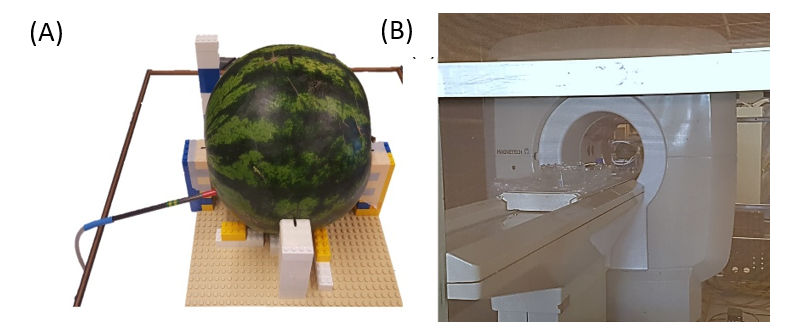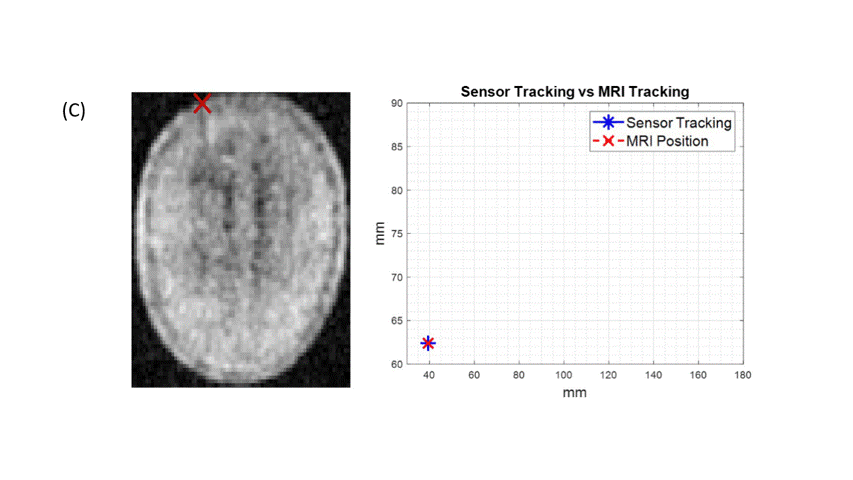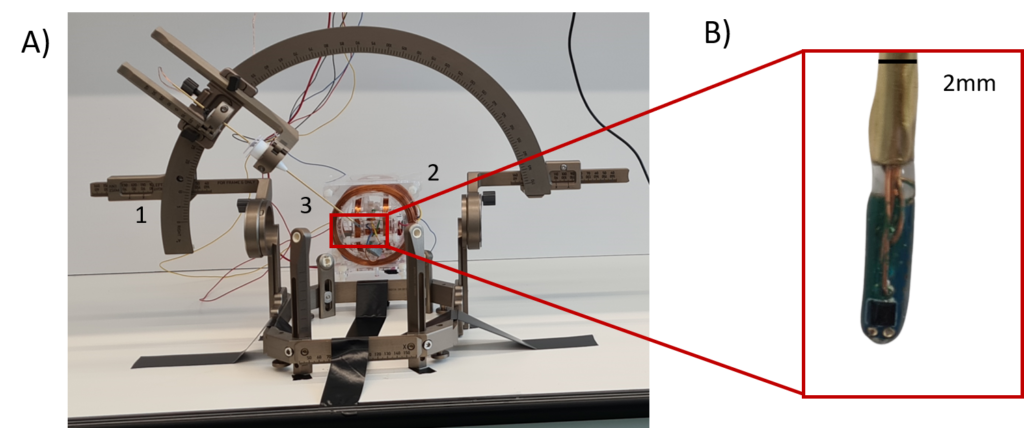MANADBS project
Deep brain stimulation (DBS) has been widely accepted as an effective treatment for movement disorders such as Parkinson Disease (PD), essential tremor or dystonia. During DBS, high-frequency (mostly 130Hz) electrical stimulation is applied to disrupt the abnormal information flow using multi-contact electrodes implanted in the structures of the brain responsible for the regulation of movement. Electrical stimulation is applied to anatomical structures measuring a few millimetres and errors in the position of the electrodes can lead to the massive therapeutic differences from undesirable side effects to treatment failure.
The goal of Magnetic Navigation for DBS (MANADBS) project is to develop a functional demonstrator allowing position and orientation detection and real-time navigation, and being compatible with current surgical protocols.
A preliminary work conducted at the Institute for Medical Engineering and Medical Informatics (IM2) has demonstrated the feasibility to track the position of DBS electrodes with an embedded 3D magnetic sensor [Quirin et al. 2021]. A comparison obtained with magnetic resonance imaging (MRI) has been used to assess our system on a simplified brain model (Figure 1). The system presented in this paper exhibits a mean absolute error of 1.35 mm on the sensor’s coordinates and an Euclidean error of 3.07 mm.


A second work was carried out to evaluate the tracking method on the electrode’s orientation [Vergne et al., 2021]. The tracking system exhibits a mean absolute error of 2.46° and a standard deviation of 2.17° for the yaw angle (figure 2).

Following these two feasibility studies, further developments will improve our tracking system to enhance the performance and allow real-time navigation in surgical environment. The objective is to reach 1 mm resolution for the position 1° resolution for the angle.
The groups involved in this project are FHNW-IM2 and the iCube Laboratory at the University of Strasbourg.

References
- Quirin, T.; Féry, C.; Vogel, D.; Vergne, C.; Sarracanie, M.; Salameh, N.; Madec, M.; Hemm, S.; Hébrard, L.; Pascal, J. Towards Tracking of Deep Brain Stimulation Electrodes Using an Integrated Magnetometer. Sensors 2021, 21, 2670. https://doi.org/10.3390/s21082670
- Vergne, Céline, Morgan Madec, Simone Hemm, Tomas Quirin, Dorian Vogel, Luc Hébrard, and Joris Pascal. 2021. ‘Tracking the Orientation of Deep Brain Stimulation Electrodes Using an Embedded Magnetic Sensor’. 10th IEEE EMBS Conference on Neural Engineering, online.
PhD Student
Office 05.W.08
Hofackerstrasse 30
CH-4132 Muttenz
Comments
No comment posted about MANADBS project